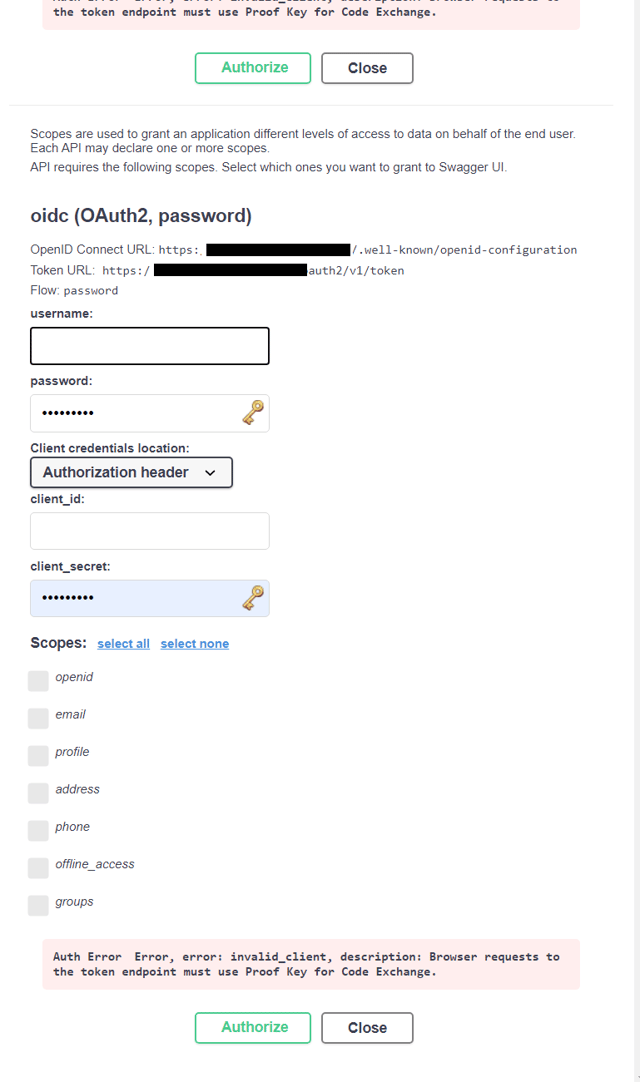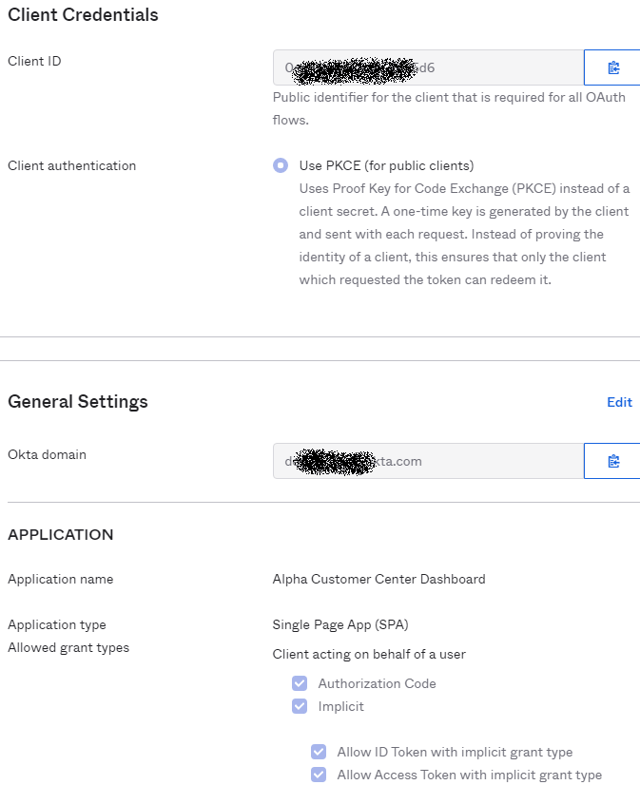After stepping around controller authorization in the debugger for the past 4 weeks, I finally decided to tackle OpenID Connect authentication in my Swashbuckle-supported .NetCore 5 API. I wish I hadn't, because I spent almost a day so far without a working solution.
Here is a brief recap.
- Support for OpenID Connect in Swagger-UI is very recent. The only place where I found this information was in Helen's comment to this question. Swagger Ui 3.38.0 is only available in Swashbuckle 6.0.7.
- Once upgraded to the latest Swashbuckle, I started to see a bunch of "discovered" authorization options in Swagger UI. Alas, PKCE does not appear to be in use, based on the error, even though I explicitly set it in Startup.cs:
.UseSwaggerUI(c => c.OAuthUsePkce());
Also, the ClientSecret there does not make sense, because PKCE is supposed to replace this (and I actually don't have a client secret). My question, does anybody have OpenID Connect with PKCE and Okta working in Swagger UI?
Auth ErrorError, error: invalid_client, description: Browser requests to the token endpoint must use Proof Key for Code Exchange.


